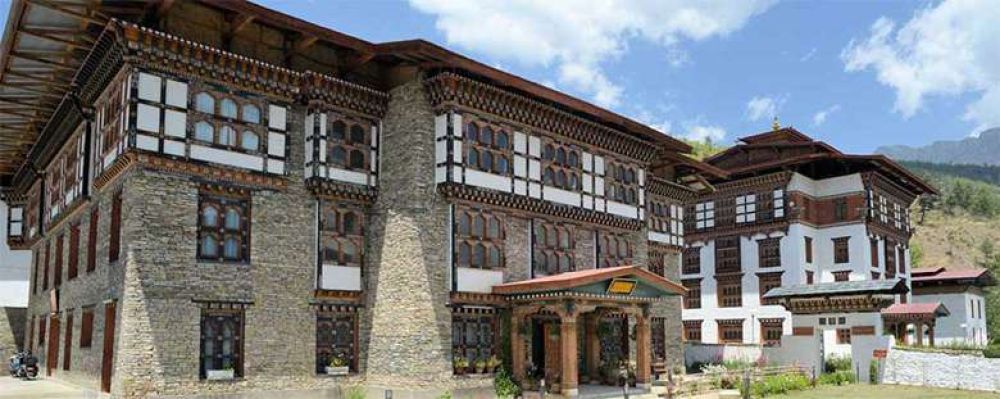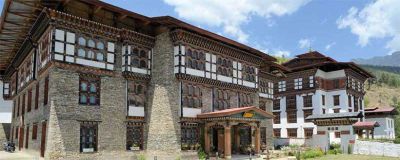

Dive deep into the rich Bhutanese culture with a guided tour through the Folk Heritage Museum (Phelchey Toenkhyim). This tour offers visitors a fascinating insight into the traditional Bhutanese way of life. The museum itself is set in a restored three-story traditional rammed mud and timber house, providing a glimpse into Bhutanese artefacts and household objects from the 19th century. During the tour, which lasts about an hour, a knowledgeable guide will walk you through the various exhibits that showcase rustic kitchen items, tools, and household equipment, providing stories and answering questions about their uses and the Bhutanese people who used them.
Learn the art of Bhutanese cuisine in this hands-on cooking class. Located at the Folk Heritage Museum, the class takes you through the process of preparing traditional dishes using time-honored techniques and organic ingredients. Over the course of two hours, participants will prepare a variety of dishes including Ema Datshi (spicy cheese and chili dish), Red Rice, and Momos (dumplings), which they can then enjoy as part of a communal meal. This serves not only as a culinary adventure but also as a cultural exchange, exposing visitors to the daily life and gastronomy of Bhutan.
The Folk Heritage Museum also offers a textile weaving demonstration that highlights the intricate and traditional craft of Bhutanese weaving. Visitors can watch skilled artisans at their looms, learn about the process of making the local fabrics, and understand the significance of different patterns and colors in Bhutanese culture. This experience usually lasts about an hour, and participants are given the opportunity to try their hand at weaving with guidance from the expert weavers. This activity provides a fascinating look into how Bhutan's renowned textiles are made, from spinning the yarn to the finished product.
Archery is the national sport of Bhutan and visitors to the Folk Heritage Museum have the unique opportunity to try their hand at this revered art form. With a traditional Bhutanese bow and arrows, participants can take part in a short session designed to introduce them to the basics of archery. Guided by an expert, visitors will learn about the cultural significance of the sport and will practice shooting arrows at a traditional style target. Typically, this activity will last about an hour, and all necessary equipment is provided by the museum.
The Folk Heritage Museum also maintains a traditional kitchen garden, something that would have been an essential component of every rural household in the past. During a 30-minute guided garden walk, visitors can learn about the various herbs, vegetables, and fruits that are grown using organic farming methods. The guide will explain how these plants play a significant role not only in the Bhutanese diet but also in traditional medicine. This walk offers guests a chance to understand the connection between agriculture and the self-sufficient lifestyle of rural Bhutan.
An exhilarating way to experience Bhutan's cultural heritage is through a folk dance performance. The Folk Heritage Museum provides a platform for local artists to present traditional dances, wearing authentic costumes and masks. This vibrant display of color and movement tells stories of the Bhutanese lifestyle, religious beliefs, and history. Performances are usually scheduled in the evenings and run for about an hour, allowing visitors enough time to immerse themselves in the rhythmic beauty of Bhutanese folklore.
One of the highlights of Bhutanese traditional wellness practices is the hot stone bath, and the Folk Heritage Museum offers visitors the chance to indulge in this therapeutic experience. Locally known as 'Tsho', it involves soaking in water that has been heated by river stones. The stones are first roasted in a fire until red-hot and then placed in the bath water, releasing minerals which are believed to have healing properties. This unique bath is especially popular during the winter months and is said to relieve aches, pains, and stress. The entire process can take up to two hours, as guests are encouraged to take their time and enjoy the relaxing benefits of the bath.
The art of Bhutanese paper making, known as 'Desho', is another cultural craft demonstrated at the Folk Heritage Museum. In this workshop, visitors can witness the traditional methods of making paper from the bark of the Daphne tree. The workshop usually lasts for about an hour and includes steps such as pulping the fibers, sheet formation, and drying. Participants gain hands-on experience and can take home their own sheet of handmade Bhutanese paper as a souvenir. This educational and interactive activity not only sheds light on an ancient craft but also allows guests to contribute to the preservation of this important cultural heritage.
To get a real sense of Bhutanese village life, the Folk Heritage Museum offers a farmhouse visit activity. Visitors are taken to a traditional Bhutanese farmhouse, which is a living example of a rural family's dwelling. Here, guests will be welcomed with genuine hospitality and treated to a traditional meal prepared by the family, with dishes such as Phaksha Paa (pork with red chili) and Jasha Maru (spicy chicken). Sharing a meal with a local family is an intimate experience that lasts about 2 hours and allows for cultural exchange and a deeper understanding of Bhutanese daily life.
Beyond archery, Bhutan has several traditional games and sports that have been played for centuries, and the Folk Heritage Museum organizes sessions where visitors can learn to play them. These activities may include Khuru (darts), Degor (throwing game), and Soksom (javelin throw). Participants will spend about an hour learning the rules and trying out the games themselves, providing a fun and engaging way to connect with Bhutan's sporting traditions. It's a light-hearted and recreational way to spend time at the museum and is suitable for visitors of all ages.
